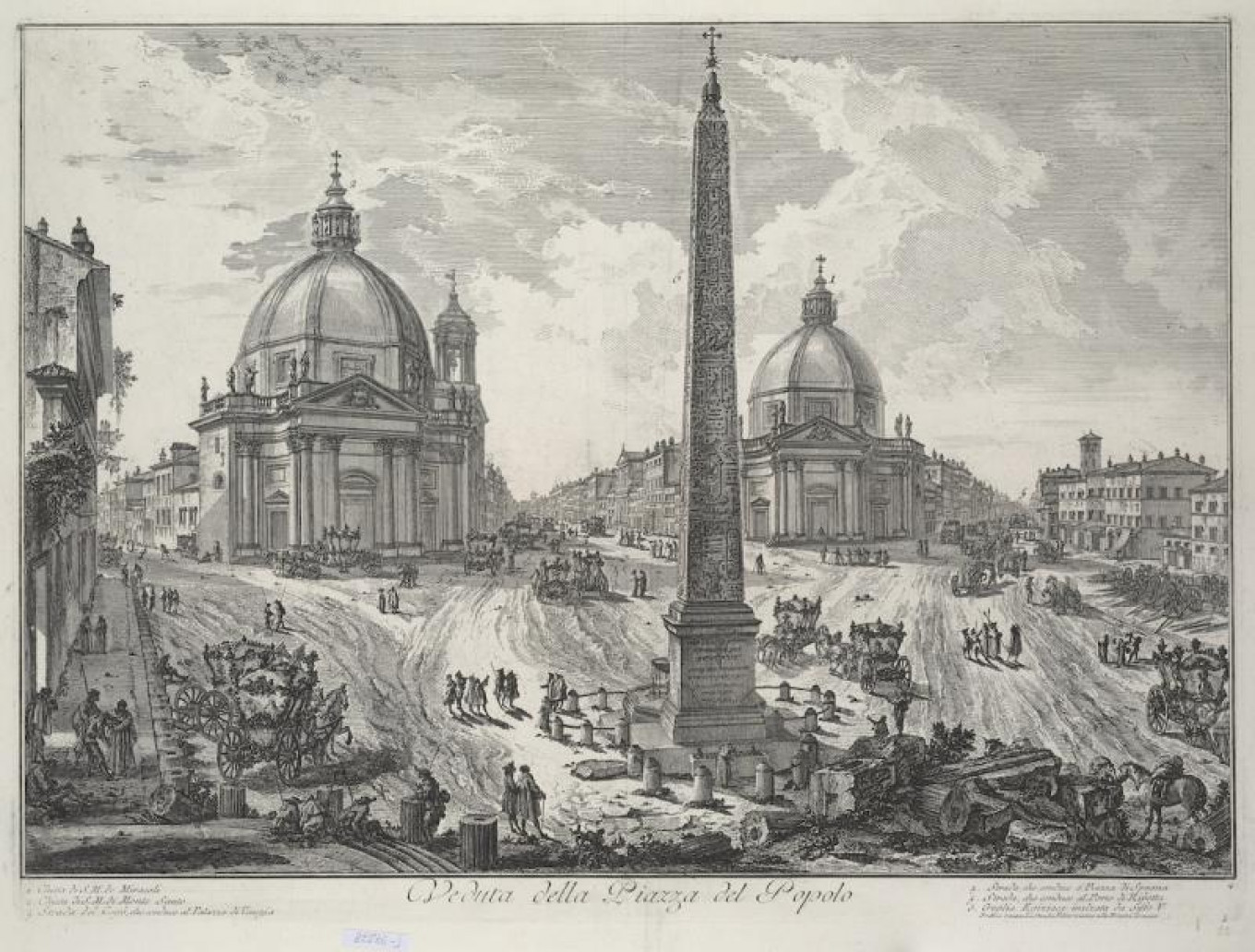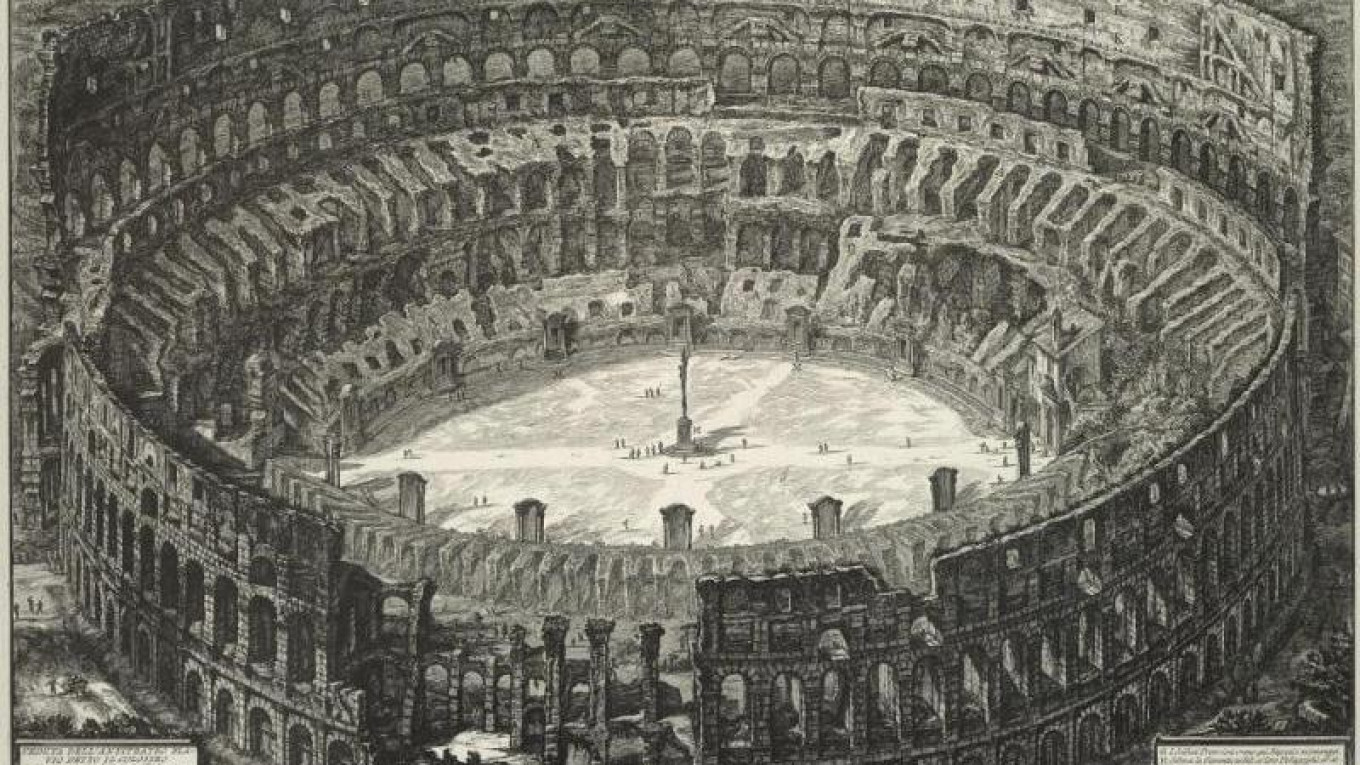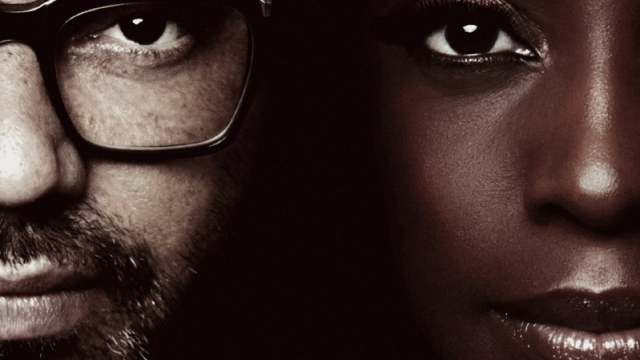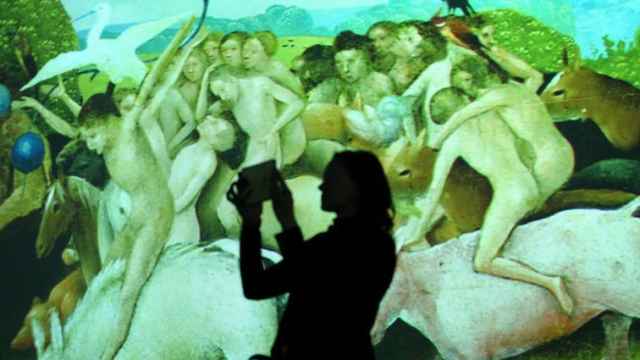The Pushkin Museum of Fine Arts has just dedicated over 1,000 square meters of exhibition space to Giovanni Battista Piranesi, the Italian engraver, architect and antiquarian best known for his exquisitely detailed etchings of Rome and fantastical prison designs. It’s a grand gesture, but not an undeserved one given the indelible mark Piranesi left on modern culture and—as the exhibition encourages you to discover—on Russia.
The retrospective aims to give visitors an insight into the artist’s work, from his life and work in Italy to his influence on the architects of Catherine the Great’s court and the domineering Soviet-era buildings modeled on his designs. Alongside over 100 of Piranesi’s etchings, visitors can admire the artwork of his predecessors and followers. More than 400 artworks and art objects are on display, both from the Pushkin Museum and museums such as the Venetian Cini Foundation, the Shchusev State Museum of Architecture and the Russian Academy of Fine Arts.
“By anyone’s consideration Piranesi was an extraordinary artist. This exhibition is an opportunity to show not just his famous works but also works that have not been exhibited before from the Pushkin Museum’s own catalogues,” said Marina Maiskaya, the curator of the exhibition, in an interview with The Moscow Times.
The ‘Rembrandt of the Ruins’
Rome, the city where Piranesi lived and worked for much of his life, was also his biggest inspiration. Born in 1720, the artist had a fevered obsession with the power and immensity of the city’s monuments, both ancient and modern. He studied and documented Rome’s historic relics throughout his career, leading to him being termed the “Rembrandt of the ruins.”
The son of a stone mason and master builder, Piranesi’s practical understanding of structural engineering is tangible in his work. He ceaselessly documented Rome’s grandeur from all perspectives and angles. One of his biggest projects, “The Roman Antiquities”—four volumes on the city and its ruins—forms part of the fascinating collection at the Pushkin Museum.
Piranesi’s series were soon popular with travelers making the Grand Tour of Europe in the 18th century. The painstaking printmaking process gave a striking splendor and reality to his scenes, while at the same time Piranesi could rearrange monuments and sights into interesting compositions which captured the essence an ancient empire.
The current exhibition, which aims to examine the artist though his influence on the modern era, contrasts Piranesi’s etchings with photographs of the same geographic locations taken three centuries later. The Italian photographer Gianluca Baronchelli was charged with reinterpreting Piranesi’s scenes on the modern map of Rome. The resulting parallel project “Piranesi Today,” demonstrates Piranesi’s ability to capture grand architectural monuments, and add to them with the power of his imagination.

Fantastical Designs
But Piranesi’s did not simply replicate and reinterpret the past. His print series “Imaginary Prisons,” which captures fantastical labyrinthine prison interiors, shows how he pushed the boundaries of spatial illusion to their extreme and, in many ways, precipitated 20th century Surrealism.
The etchings of diabolical subterranean vaults show Piranesi fully indulging his artistic impulses: they are both menacing and mesmerizing. Piranesi combines a clearly ordered way of constructing the interiors with a chaotic, winding and rather dreamlike end result. Looking at them you feel a desire to enter and ascend the many twisting staircases and corridors, but also the fear and the claustrophobia of the institutions which seem to have no escape.
“With the ‘Prisons’ series Piranesi was able to create a new space that has influenced 20th century cinema as well as literature,” said Federica Rossi, an architectural historian at the Kunsthistorisches Institut and another of the exhibition’s curators. From the cinema of Sergei Eisenstein to the troubled protagonists of Dostoevsky, Rossi, a dedicated Piranesi scholar, sees him as an influential force in Russian culture. Dark and disturbing, his prison series are even said to have inspired modern video game artists in their design of maze and labyrinthine quests.
Between Antiquity and Modernity
To further immerse themselves in Piranesi’s mysterious artwork, visitors can watch a 3D video created by French artist Gré- goire Dupond. Originally created for a 2010 Piranesi exhibition at the Venetian Cini Foundation, the video zooms into Piranesi’s artworks, revealing their dark vitality and intricate craftsmanship.
“The entire idea of the exhibition is to show the predecessors and the teachers of Piranesi as well as his followers, with a focus on Russia,” said Rossi. “Going back to Catherine the Great’s empire, the architects who worked on the designs for her court were influenced by Piranesi. In the mid 1700’s every bourgeois family in St.Petersburg would have known of Piranesi—it was fashionable to collect his engravings at home.”
And the artist’s brooding, atmospheric scenes also had a striking impact on the 20th century. The design of the triumphal columns, obelisks, arches and mausoleums during the Soviet Union were inspired by Piranesi. Works by Soviet architects as Melnikov, Nanushyan, Iofan are displayed alongside Piranesi’s works in the exhibition. So great was the Italian’s impact on the era that his influence is sometimes termed Russian Piranesianism.
As you near the end of the exhibition, a striking ceiling-high work by Russian contemporary artist Valery Koshlyakov demands your attention. It might be have been painted on cardboard in the 21st century, but the domineering and highly texturized building it portrays is an apt ode to Piranesi’s oeuvre.
“Piranesi is not just a style or a genre, he is also the expression of an aspiration always present in the human being, the yearning of a constant creation and demolition,” said Koshlyakov.
“Giovanni Battista Piranesi: Artworks from Russian and Foreign Collections” runs through Nov. 13 at the Pushkin Museum of Fine Arts. 12 Ulitsa Volkhonka, Metro Kropotkinskaya. artsmuseum.ru
A Message from The Moscow Times:
Dear readers,
We are facing unprecedented challenges. Russia's Prosecutor General's Office has designated The Moscow Times as an "undesirable" organization, criminalizing our work and putting our staff at risk of prosecution. This follows our earlier unjust labeling as a "foreign agent."
These actions are direct attempts to silence independent journalism in Russia. The authorities claim our work "discredits the decisions of the Russian leadership." We see things differently: we strive to provide accurate, unbiased reporting on Russia.
We, the journalists of The Moscow Times, refuse to be silenced. But to continue our work, we need your help.
Your support, no matter how small, makes a world of difference. If you can, please support us monthly starting from just $2. It's quick to set up, and every contribution makes a significant impact.
By supporting The Moscow Times, you're defending open, independent journalism in the face of repression. Thank you for standing with us.
Remind me later.






